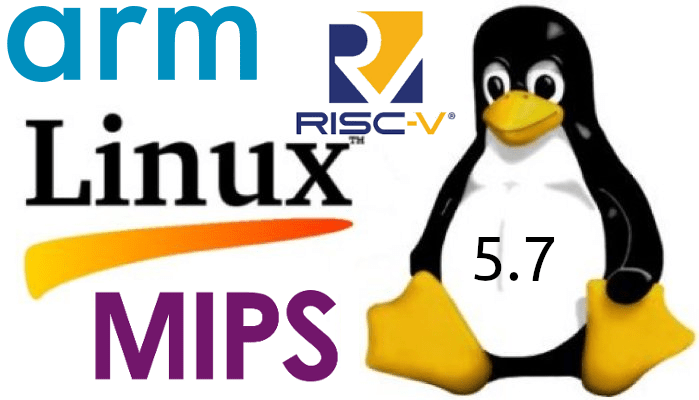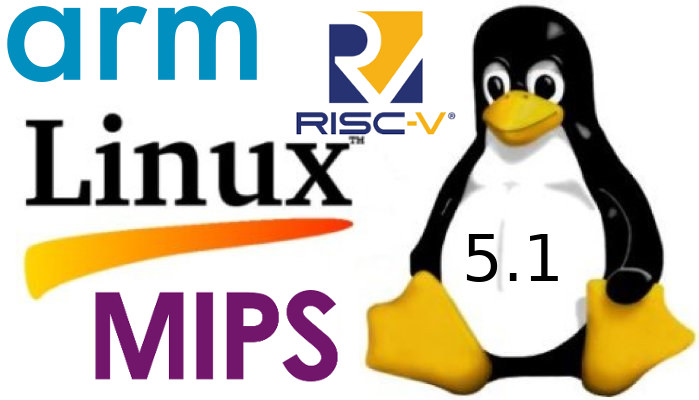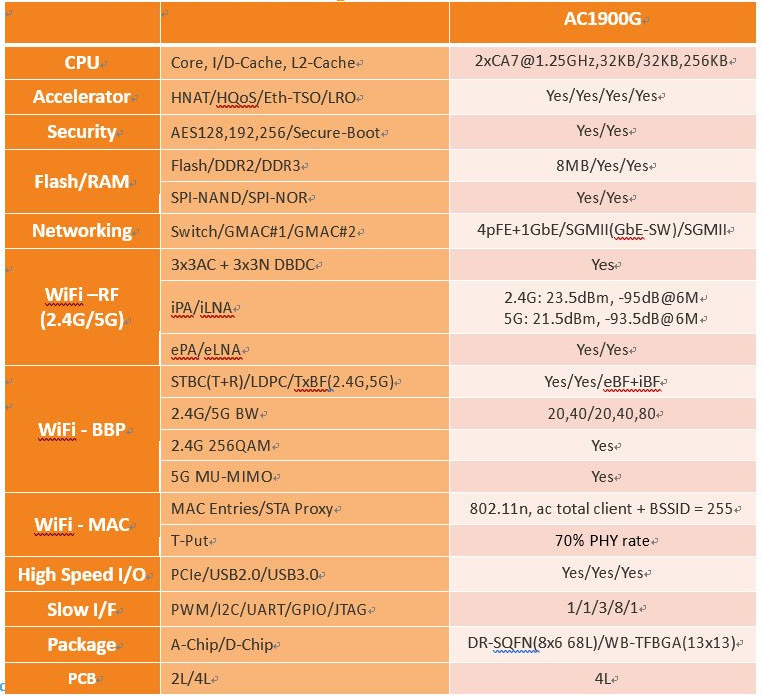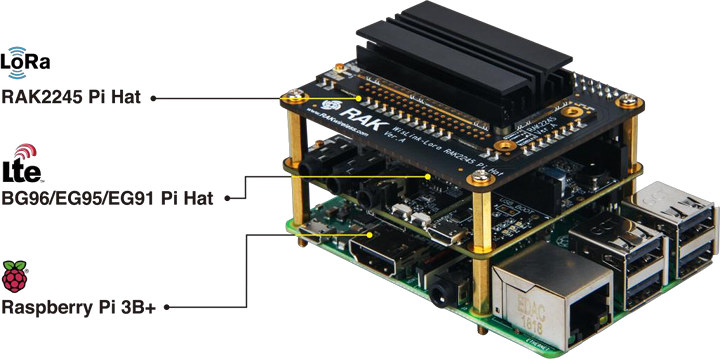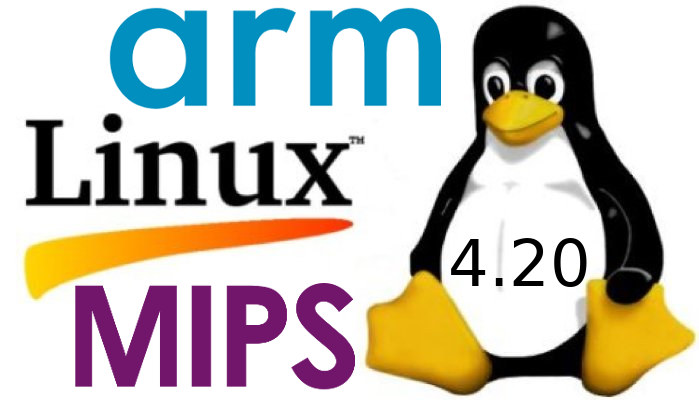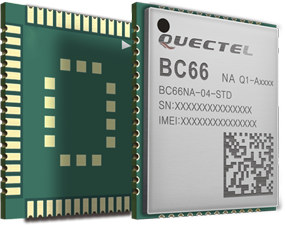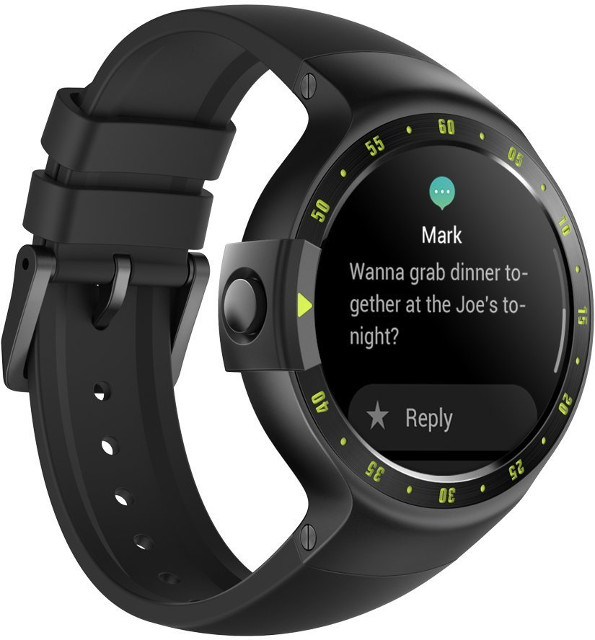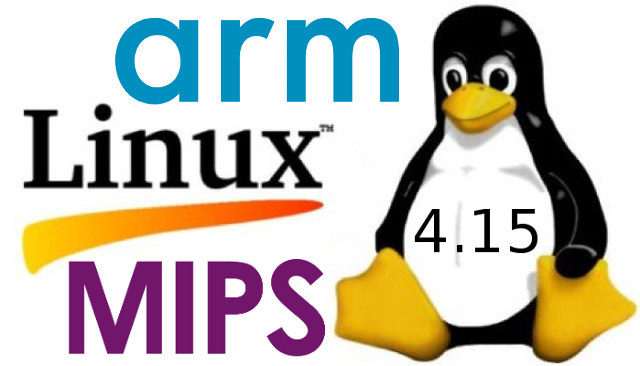OK… I’m a bit late on that one. Linus Torvalds released Linux 5.7 last week: So we had a fairly calm last week, with nothing really screaming “let’s delay one more rc”. Knock wood – let’s hope we don’t have anything silly lurking this time, like the last-minute wifi regression we had in 5.6.. But embarrassing regressions last time notwithstanding, it all looks fine. And most of the discussion I’ve seen the last week or two has been about upcoming features, so the merge window is now open and I’ll start processing pull requests tomorrow as usual. But in the meantime, please give this a whirl. We’ve got a lot of changes in 5.7 as usual (all the stats look normal – but “normal” for us obviously pretty big and means “almost 14 thousand non-merge commits all over, from close to two thousand developers”), So the appended shortlog is only […]
Linux 5.1 Release – Main Changes, Arm, MIPS & RISC-V Architectures
Linus Torvalds has just announced the release of Linux 5.1: So it’s a bit later in the day than I usually do this, just because I was waffling about the release. Partly because I got some small pull requests today, but mostly just because I wasn’t looking forward to the timing of this upcoming 5.2 merge window. But the last-minute pull requests really weren’t big enough to justify delaying things over, and hopefully the merge window timing won’t be all that painful either. I just happen to have the college graduation of my oldest happen right smack dab in the middle of the upcoming merge window, so I might be effectively offline for a few days there. If worst comes to worst, I’ll extend it to make it all work, but I don’t think it will be needed. Anyway, on to 5.1 itself. The past week has been pretty calm, […]
Mediatek MT7629 Dual Core Arm Processor to Power AC1900 Routers
MediaTek is working on a new dual core Cortex A7 processor that supports OpenWrt and targets AC1900 WiFi routers. That’s what I learned from a tweet by WidoraIoT detailing the main features of MediaTek MT7629 SoC as shown in the table below. So basically we have two Arm Cortex-A7 cores clocked @ up to 1.25 GHz, 8MB built-in? flash, HW accelerators and security/crypto engines, multiple Gigabit and Fast Ethernet interfaces, built-in support for 802.11n (WiFi 4) 3×3 MIMO and 802.11ac (WiFi 5) 3×3 MIMO, as well as various interfaces such as PCIe, USB 2.0, USB 3.0, and the usual slower I/Os like I2C, PWM and UART. A web search mostly shows code commits to Linux and U-boot, and we learn a few extra details such as MT7629 shares the same PCIe IP block as MT7622 dual core Cortex-A53 processor. It also reveals a forum post on Widora website with a […]
RAK Wireless Introduces DIY Cellular LoRa Gateways, Raspberry Pi & 96Boards Compatible LoRa Modules
RAK Wireless already has a decent offering of LoRa gateways and modules, but the company has been working on two new LoRa gateways, one Enterprise grade model – RAK7249 gateway – based on fully custom hardware, and the other – Pilot Gateway Pro RAK7243 – features a Raspberry Pi 3B+ board with Cellular & GPS connectivity on top of a LoRa radio. RAK Wireless will also introduce three RAK2245/RAK2248 LoRa concentrator modules that can easily be used with boards following Raspberry Pi, or 96Boards IoT edition form factors. RAK7249 DIY Enterprise LoRa Gateway Specifications: Main Board WiFi Module – RAK634 Module SoC – Mediatek MT7628N MIPS processor @ up to 580 MHz System Memory – 128MB DDR2 RAM Storage – 16MB SPI flash Connectivity – WiFi: 2×2 MIMO 802.11b/n/n mPCIe LoRa concentrator card Semtech SX1301 based Standard version with 8 channel Gateway and also support Max.16 channel Gateway. Tx Power […]
Linux 4.20 Release – Main Changes, Arm and MIPS Architectures
After Greg K-H handling Linux 4.19 release, Linus Torvalds is back at the helm, and released Linux 4.20 just before Christmas: Let’s face it, last week wasn’t quite as quiet as I would have hoped for, but there really doesn’t seem to be any point to delay 4.20 because everybody is already taking a break. And it’s not like there are any known issues, it’s just that the shortlog below is a bit longer than I would have wished for. Nothing screams “oh, that’s scary”, though. And as part of the “everybody is already taking a break”, I can happily report that I already have quite a few early pull requests in my inbox. I encouraged people to get it over and done with, so that people can just relax over the year-end holidays. In fact, I probably won’t start pulling for a couple of days, but otherwise let’s just […]
Arduino Support for Quectel BC66 NB-IoT Module
Quectel has several LTE IoT modules such as BG96 with NB-IoT + eMTC connectivity, but the company has also a smaller, cheaper NB-IoT only module called Quectel BC66, and Georgi Angelov (Wiz-IO) informed me he implemented Arduino support for the module with BC66-DVK board. Let’s first have a look at BC66 specifications: Frequency Bands Available now – B1/B3/B5/B8/B20 Under development – B2/B12/B13/B17/B18/B19/B25/B26/B28/B66 Output Power – 23dBm ±2dB Sensitivity – -129dBm Data Data Rate Single-Tone: 25.5kbps (DL)/16.7kbps (UL) Multi-Tone: 25.5kbps (DL)/62.5kbps (UL) Protocol Stacks – UDP/TCP/CoAP/LwM2M/SNTP/MQTT/PPP/TLS/DTLS/HTTP/HTTPS/FTP SMS – Text/PDU Mode Interfaces – 1x USIM, 1x PSM _EINT, 3x UARTm 1x ADC, 1x RESET, 1x PWRKEY, 1x NETLIGHT, 1x antenna, 1x SPI, “OpenCPU” version only: 1x I2C, 1x I2S, and configurable GPIO Supply Voltage – 2.1 to 3.63V (3.3 typ.); I/O: 1.8V Power Consumption (Typ.) 3.5μA @PSM 0.29mA @Idle Mode (eDRX=81.92s) 0.43mA @Idle Mode (DRX=2.56s) 110mA @LTE Cat NB1, 23dBm Dimensions – […]
Ticwatch S / E Android Wear Smartwatches are Powered by Mediatek MT2601 SoC
Android Wear is normally used in products from larger companies such as Huawei, LG, or ASUS. In the past, some smaller companies claimed to have designed their own Android Wear smastrwatch with approval from Google, but eventually their products went nowhere, even though one was listed on some sellers as a pre-order. But last summer, Mobvoi launched a Kickstarter campaign for their Ticwatch S & E smartwatches powered by Android Wear, and they managed to raise over $3 millions dollars from close to 20,000 backers with pledges starting at $99. The watches can now be purchased online for $127.99 and up from sites like Amazon, GeekBuying, GearBest, or directly from Mobvoi store. Ticwatch S (Sport) and E (Express) share many of the same features, but Ticwatch E is a bit lighter and more elegant, while Ticwatch S comes with a breathable band design with an integrated GPS antenna. Specifications: SoC […]
Linux 4.15 Release – Main Changes, Arm and MIPS Architectures
Linus Torvald has released Linux 4.15 last Sunday: After a release cycle that was unusual in so many (bad) ways, this last week was really pleasant. Quiet and small, and no last-minute panics, just small fixes for various issues. I never got a feeling that I’d need to extend things by yet another week, and 4.15 looks fine to me. Half the changes in the last week were misc driver stuff (gpu, input, networking) with the other half being a mix of networking, core kernel and arch updates (mainly x86). But all of it is tiny. So at least we had one good week. This obviously was not a pleasant release cycle, with the whole meltdown/spectre thing coming in in the middle of the cycle and not really gelling with our normal release cycle. The extra two weeks were obviously mainly due to that whole timing issue. Also, it is […]


